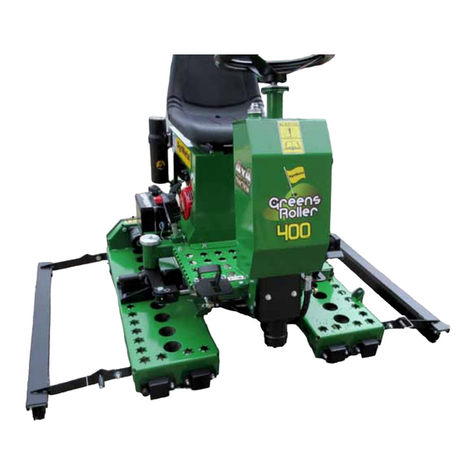
7
2.7 OPERATING SAFETY
1. Please remember it is important that you read
and heed the safety signs on the Leaf and
Debris Collector. Clean or replace all safety
signs if they cannot be clearly read and under-
stood. They are there for your safety, as well
as the safety of others. The safe use of this
machine is strictly up to you, the operator.
2. All things with moving parts are potentially
hazardous. There is no substitute for a cau-
tious, safe-minded operator who recognizes
potential hazards and follows reasonable
safety practices. The manufacturer has
designed this Leaf and Debris Collector to
be used with all its safety equipment properly
attached, to minimize the chance of accidents.
Study this manual to make sure you have all
safety equipment attached.
3. If a safety shield or guard is removed for any
reason, it must be replaced before the ma-
chine is again operated.
4. When the use of hand tools is required to
perform any part of assembly, installation, ad-
justment, maintaining, repairing, removal, or
moving, be sure the tools used are designed
and recommended by the tool manufacturer
for that specic task.
5. Personal protection equipment including hear-
ing protection, hard hat, safety glasses, safety
shoes, and gloves are recommended during
assembly, installation, operation, adjustment,
maintaining, repairing, removal, or moving.
Do not allow long hair, loose tting clothing, or
jewelry to be around moving parts.
6. Always use two people to handle heavy, un-
wieldy components during assembly, installa-
tion, removal or moving.
7. Never place any part of your body where it
would be in danger if movement should occur
during assembly, installation, operation, main-
taining, repairing, removal or moving.
8. Never place yourself between the tractor and
machine while implement is in operation.
9. Place all controls in neutral, stop engine, set
park brake, remove ignition key and wait for
all moving parts to stop before servicing, ad-
justing, repairing or unplugging.
10. Do not walk or work under a raised machine,
discharge door or attachment unless it is
securely blocked or held in position.
11. A heavy load can cause instability of the trac-
tor. Use extreme care during travel. Slow
down on turns and watch out for bumps.
12. Never use alcoholic beverages or drugs which
can hinder alertness or coordination while
operating this equipment. Consult your doc-
tor about operating this machine while taking
prescription medications.
13. Do not allow riders on the machine or tractor
at any time. There is no safe place for any
riders.
14. Never allow children to operate or be around
this machine.
15. Do not reach into blower openings when the
engine is running. Install and secure access
covers before starting engine.
16. Clear the work area of objects which might be
picked up and snagged or entangled in the
machine.
17. Keep hands, feet, hair, jewelry, and clothing
away from all moving and/or rotating parts.
18. Do not stand behind machine when the dis-
charge door is open and blower is running.
19. Do not unhook machine when it is loaded.
Hitch can upend.
20. Keep hands and feet away from blower and
pick-up head when engine is running. Keep
others away.




























